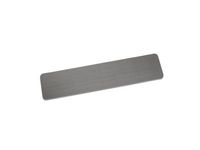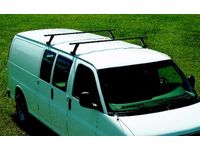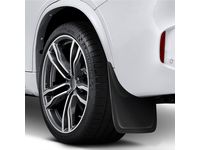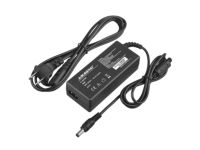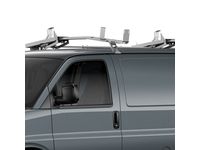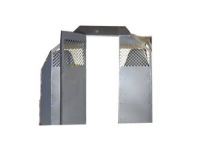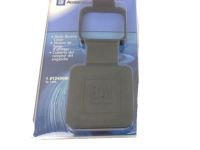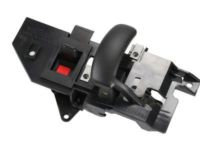Why choose GMPartsGiant
- Large Inventory
The best site to buy Chevrolet Express genuine parts for years has been GMPartsGiant.com. We're the best online parts and accessory store for your Chevrolet Express. GMPartsGiant.com offers a large parts and accessory inventory to cover all your vehicle's repairs. Feel free to browse through our genuine Chevrolet Express parts and accessory catalog to find all your vehicle's needs.
- Fast Shipping Times
All of our Chevrolet Express auto parts and accessories are expedited directly from verified dealers and backed by the manufacturer's warranty. Our experienced team ensures the orders are packed to provide quick transit times. The majority of the orders are shipped out within a couple of business days to get the parts out to you as fast as possible.
- Low Prices
Our low prices say it all. You can rest assured that you will always receive unbeatable prices on OEM Chevrolet Express parts. Our giant inventory is beyond compare and has everything you need at an extraordinary value not found anywhere else. Whether you're restoring an old vehicle or upgrading the performance of your vehicle you can count on the quality of our products without hurting your bank account.
Popular Genuine Chevrolet Express Parts
- Engine Parts View More >
- Fuel System, Exhaust, Emission System Parts View More >
- Brakes Parts View More >
- Transmission - Automatic Parts View More >
- Frames, Springs, Shocks, Bumpers Parts View More >
- Cooling System, Grille, Oil System Parts View More >
- Front Axle, Front Suspension, Steering Parts View More >
- Front End Sheet Metal, Heater Parts View More >
Shop Genuine Chevrolet Express Parts with GMPartsGiant.com
The Chevrolet Express, a series of full-size vans, was first introduced by General Motors in 1996. Over the years, it has seen several engine and transmission revisions, constantly adapting to provide better performance and functionality. Originally, it offered a variety of engines, from a standard 4.3L V6 to optional 5.0L, 5.7L, 6.5L turbodiesel, and 7.4L V8. In 2003, the line-up saw a significant change, retaining only the 4.3L V6, and introducing the "Generation III" small-block V8 engines, with capacities ranging from 4.8L to 6.0L. The 6.6L Duramax diesel V8 introduced in 2006 was eventually replaced by a 2.8L inline-4 Duramax, and an all-new 6.6L V8 took the place of the old 6.0L version in the latest update. The Express originally came with a 4-speed automatic overdrive transmission, which transitioned to a six-speed 6L90 automatic for higher trims in 2010, and later an 8-speed automatic 8L90-E. As for the chassis, the Express started with the GMT600, specifically designed for full-size vans, featuring a full-length ladder frame and boxed forward frame rails, with two wheelbase options: a standard length of 135 inches or an extended length of 155 inches. Post-2003 models shifted to the GMT610, with a three-section fully-boxed frame. The Express boasts a short-long arm rear-wheel-drive front suspension, torsion-bar all-wheel-drive front springs, and four-wheel disc brakes with standardized ABS. All these features make the Chevrolet Express a classic choice for group travels.
Chevrolet Express owners, particularly those with high-mileage vehicles, have noted a couple of prevalent issues. First is the problem with the engine, characterized by the vehicle starting then randomly dying, engine misfires making it hard to restart, poor fuel economy, and slow acceleration. These symptoms usually point to a need for a new rocker shaft spring kit, spark plug, or fuel pump. The second most common issue is differential failure, usually detected by noises like whining, howling, or clunking, vibrations, and oil leaks from the differential seal, all indicating the need for a differential replacement. Additionally, due to frequent usage, parts like door handles, responsible for the safe opening and closing of the vehicle doors, can get loose or dysfunctional, requiring replacement. Similarly, after a collision or accident, or if seat belts are frayed or malfunctioning, a replacement is necessary for safety. These seemingly minor parts often go unnoticed but demand attention to avoid larger issues down the line.
If you want to save money in the long run on maintenance and repairs, you should choose OEM products because they're of the highest level of durability. Our online store, GMPartsGiant.com, presents a vast selection of genuine Chevrolet Express parts, like Rear Body Structure, Moldings & Trim, Cargo Stowage, Transfer Case at unbeatable prices. Plus, all our OEM Chevrolet Express parts, such as Transmission are covered by the manufacturer's warranty and come with the convenience of a hassle-free return policy and prompt delivery service.
Chevrolet Express Parts Questions & Answers
- Q: How do you remove the Hood Cable and Hood Latch on Chevrolet Express?A: Let the latch removal procedure start by scribing a line around the latch for alignment purposes during reinstallation. Once this is done, remove all the latch retaining bolts which are securing it to the radiator support and detach the hood release cable from behind the latch assembly. During installation, reverse only the removing process. Within moments of taking off detach it and after that detach also all its retaining clips in engine compartment for that matter. To free the cable, some clips may have to be cut. Use a piece of wire in attaching it to aid when installing its replacement. Removing driver's kick panel in passenger compartment will expose you to hood latch release cable and handle. This side hinge pillar will provide you with access to screws which when removed will enable one take off hood release cable and handle assembly from driver's left side hinge pillar. From there pull it through firewall grommet going into passenger compartment. The old cable should be disconnected from guide wire which is then fastened back on new one. Take up new cable attaching it onto wire then pulling through firewall until it gets down to reach latch assembly. After that let everything remain as they were while fixing firmly firewall into place so as not to alter its position when opening or closing doors there of again.
- Q: How do you remove the Door Handle,Door Latch Assembly and Door Lock Cylinder on Chevrolet Express?A: To remove the door latch, remove the door trim panel and water shield, if it's the front door, remove the rear glass run channel, or if it's a sliding door, remove the door control assembly. Then, remove the screws securing the latch to the door and adjust the latch to disconnect the electrical connector (if equipped) and detach the rods, and latch assembly from the door. For installation, simply follow the reverse of the removal procedure. To remove the inside door handle, remove the door trim panel, and the water shield, drill out the rivet securing the inside door, detach the rods from the inside door handle, and remove the handle. Installation is the reverse of the removal procedure. To remove the upper door latch striker from the rear side door, remove the striker mounting bolts and the striker. Installation is the reverse of removal.
- Q: How do you replace the fuel pressure regulator on Chevrolet Express?A: To replace the fuel pressure regulator, start by relieving the fuel system pressure and disconnecting the cable from the negative battery terminal. Then, remove the engine cover and, on certain engine models, the upper intake manifold. Next, remove the pressure regulator retaining clip and detach the fuel pressure regulator from the fuel meter body or fuel rail. If replacing the regulator, bring the old regulator and retaining clip to the store to ensure you get the correct replacement. Replace all of the pressure regulator O-rings, including the smaller one that may still be in the fuel meter body or fuel rail. Disconnect the vacuum line from the regulator and remove the retaining clip and regulator. Make sure all spacers and O-rings are removed from the fuel rail. Lubricate the new O-rings with oil and then proceed with the reverse of the removal process for installation. Note that on 2004 and later models, the fuel pressure regulator is not serviceable as it is an integral part of the fuel pump module.



















































